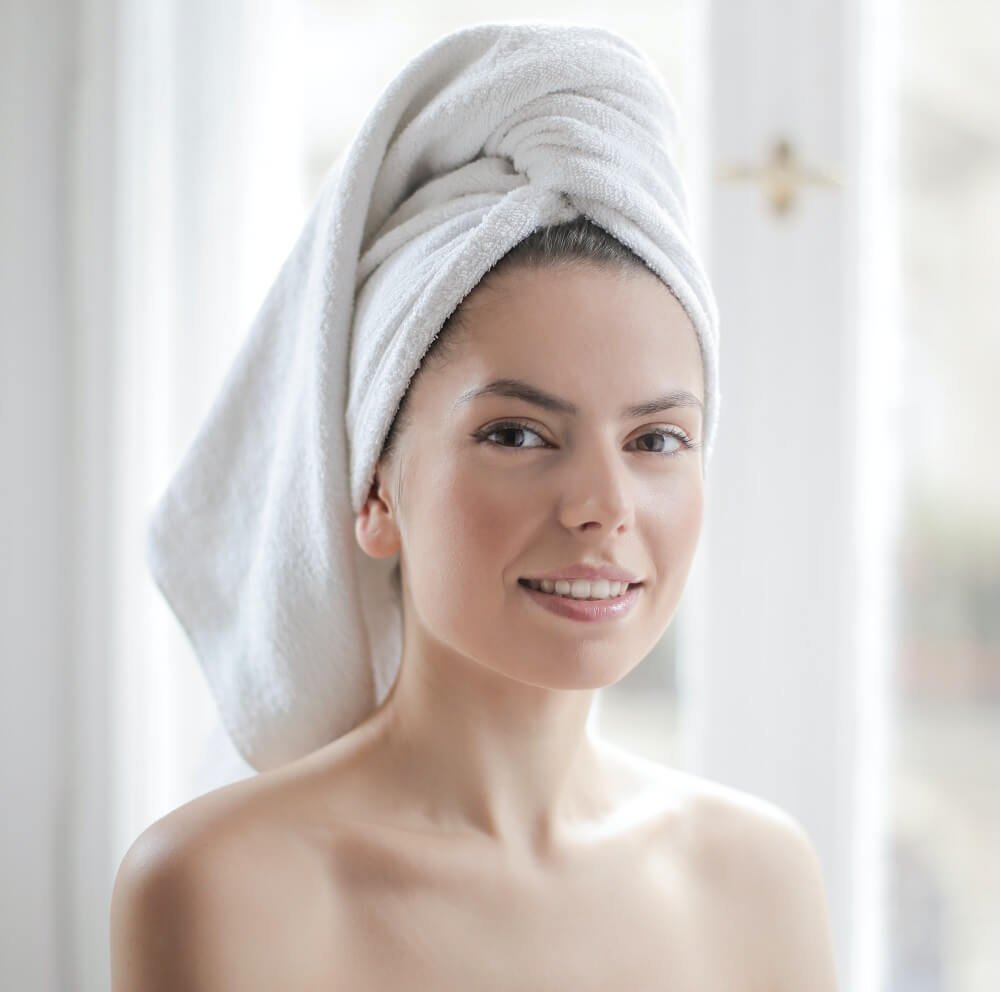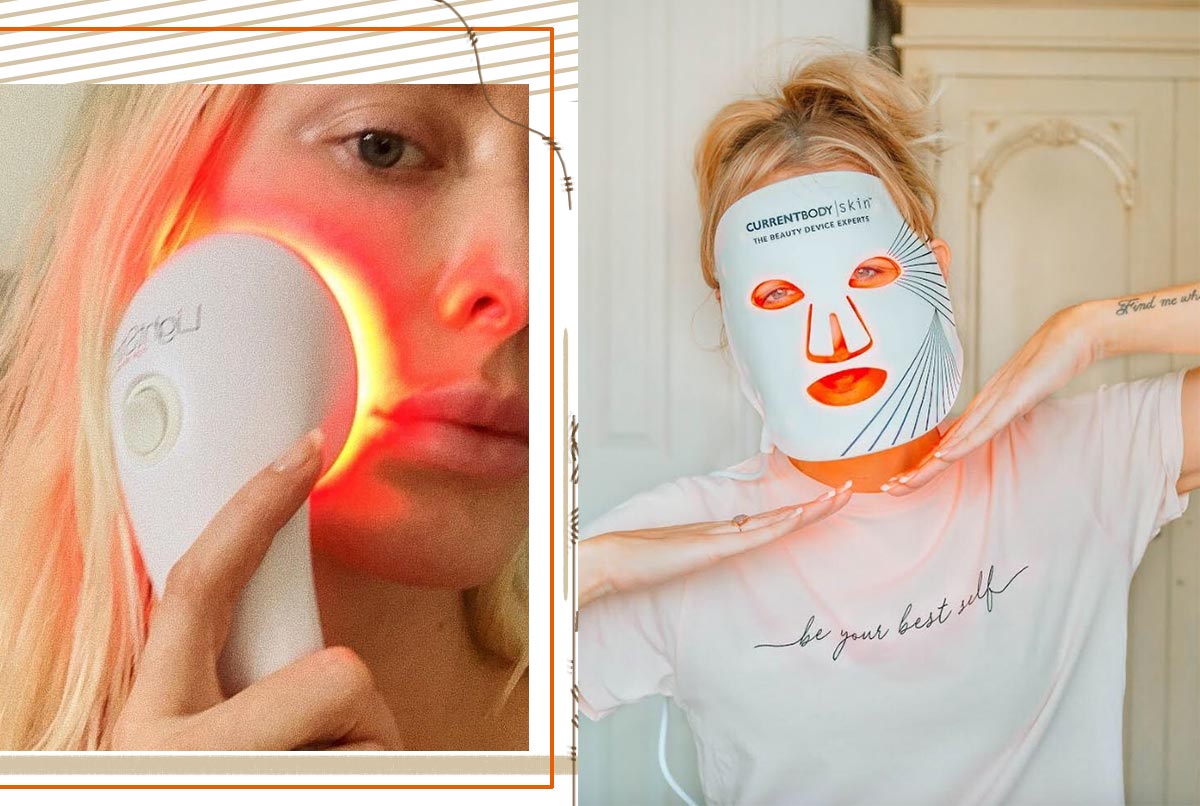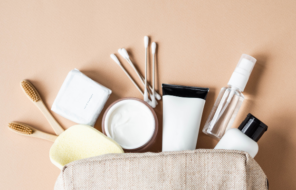When you think of getting a facial, you probably imagine a luxurious face massage or maybe the slight sting of a peel. That’s until your esthetician suggests a light-emitting diode (LED) facial, a unique treatment that involves lying under a powerful lamp to rejuvenate the skin, reduce wrinkles, or fight breakouts.
But do LED facials really work? In this article, we’ll explore the science behind LED light therapy facials with the help of celebrity estheticians Sarah Akram and Joanna Czech, who swear by it in their own practice. Let’s get lit!
What is an LED facial?
Using LED for therapy was actually a NASA discovery. Originally, the lights were used to grow plants in space, but later on, it was discovered that they could heal wounds by promoting new cell growth. It’s this same effect that’s made LED light a powerful addition to facial treatments.
During an LED facial, the client lies in a treatment bed with a large LED panel placed over their face. The esthetician will choose a specific light that correlates with the client’s specific beauty goals or skin concerns. At home, it’s also possible to use LED masks or wands to enjoy similar treatments.
Different LEDs emit light at different wavelengths, which coincide with certain colors. These wavelengths penetrate varying levels of human skin or tissue, which is what leads to results.
The estheticians we interviewed for this article mentioned that they prefer to add LED therapy to existing facials rather than offering it as a single treatment. “The LED component of a facial can be incorporated at any point in treatment,” Akram told Glowsly. “LED penetrates the best on cleansed, bare skin [or] after exfoliation.”
How do LED facials work?
It’s hard to differentiate gimmicks from truly effective treatments, so we’re happy to report that there’s lots of evidence backing the effectiveness of LED light therapy.
LED facials work through photobiomodulation, which is the process by which light influences the behavior of cells and tissue in the body. “Red light increases collagen and elastin production, which helps to firm the skin and diminish existing wrinkles,” Czech explained. “Blue light forms free oxygen radicals when exposed to the skin, ultimately killing acne-causing bacteria. It is a highly effective tool for controlling breakouts and bacterial rosacea.”
The brands producing LED devices often include green or yellow light modalities in addition to red, far-infrared, and blue lights. However, during our research, we weren’t able to find any studies showing that these wavelengths had any specific effects.
LED facial benefits

Here’s a quick summary of the science-backed benefits of LED light therapy facials and which LED colors and wavelengths are best for each concern.
- Anti-aging. By stimulating the production of collagen and other cells, red and far-infrared light, LED therapy softens wrinkles and increases skin firmness.
- Acne. Blue light can decrease acne bacteria and inflammation on the surface of the skin, reducing breakouts for those suffering from mild to moderate acne. Adding in red light can further address inflammation deeper in the skin.
- Hyperpigmentation. There isn’t a lot of research on LED lights for hyperpigmentation, but the research that does exist suggests that red and far-infrared light may help fade dark spots.
- Rosacea and eczema. Both the healing effects of red light and the antibacterial effects of blue light may reduce the severity of rosacea and eczema flare-ups, as well as other sensitive skin conditions.
Aside from these main skin benefits, Czech mentioned that LED light therapy could help with other concerns, including precancerous skin lesions, psoriasis, hair loss, and wound healing.
What to expect from an LED facial
When you seek out a facial treatment with specific goals in mind, it’s best to have realistic expectations. In most studies regarding LED light therapy, the treatments were conducted on a weekly or bi-weekly basis over the course of a few weeks or even months. In other words, one treatment probably won’t cut it.
The results rarely show up right away, either. In fact, in most studies, the best improvements in the skin appeared a few weeks after the subjects finished their course of treatment. That means that while you’re going in for LED facials, you might think they’re not working because it takes a while for this rejuvenating effect to actually appear on your skin.
LED facial risks
As long as you take adequate precautions, LED facials should be safe and painless. Both Akram and Czech said they’ve never had a client experience adverse effects.
The main risks related to LED facials to be aware of involve the eyes, which can be sensitive to visible light. Regular exposure can lead to macular degeneration, while in the short term, some people can experience migraines. Akram and Czech both stressed the importance of wearing light-protective goggles during treatment to avoid such risks.
Most studies on LED light therapy facials found no other adverse effects, with the exception of a few rare cases of temporary, mild skin irritation and dryness. That said, you may want to speak to your doctor about LED light therapy if you have any pre-existing conditions or if you’re on any photosensitizing medications.
All the power without the pain
During skincare treatments, we’re used to feeling products or tools touch our skin, so the idea of lying under a light panel and somehow changing the appearance of the skin isn’t intuitive. However, the evidence that LED facials can make a real difference, especially for signs of natural aging and acne, are incredibly robust and might be just the right addition to your next facial treatment.
At a time when painful laser or microneedling treatments are trending, Czech stressed the importance that a gentle alternative exists: “I love that it’s a result-driven, yet non-invasive treatment,” she said. “I want people to know that you don’t have to experience pain to see results.”





